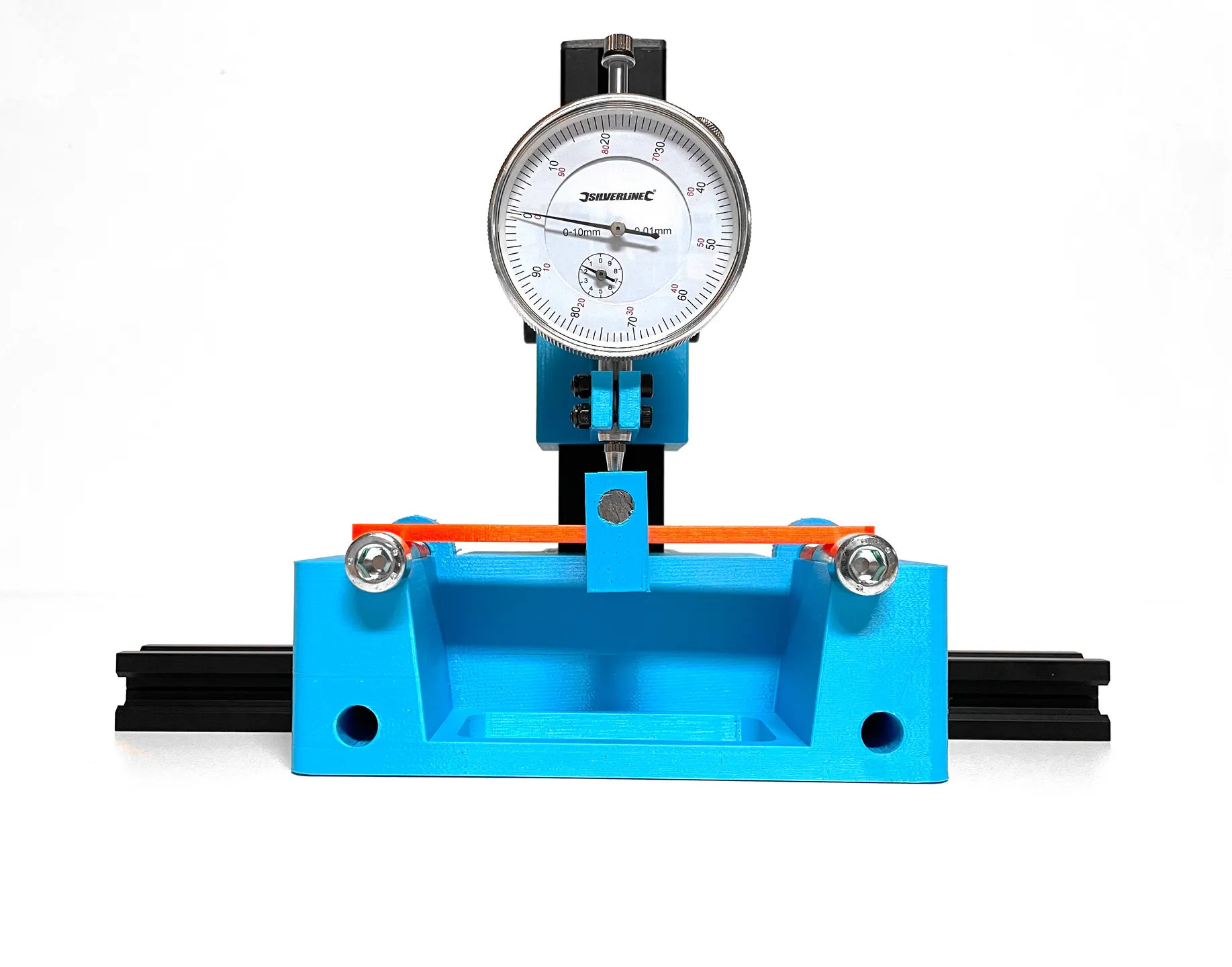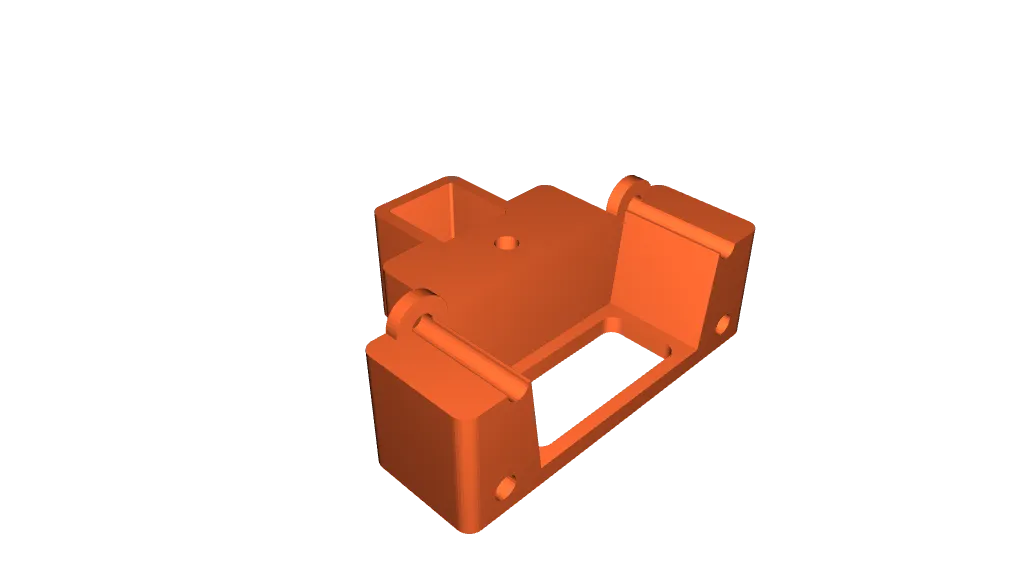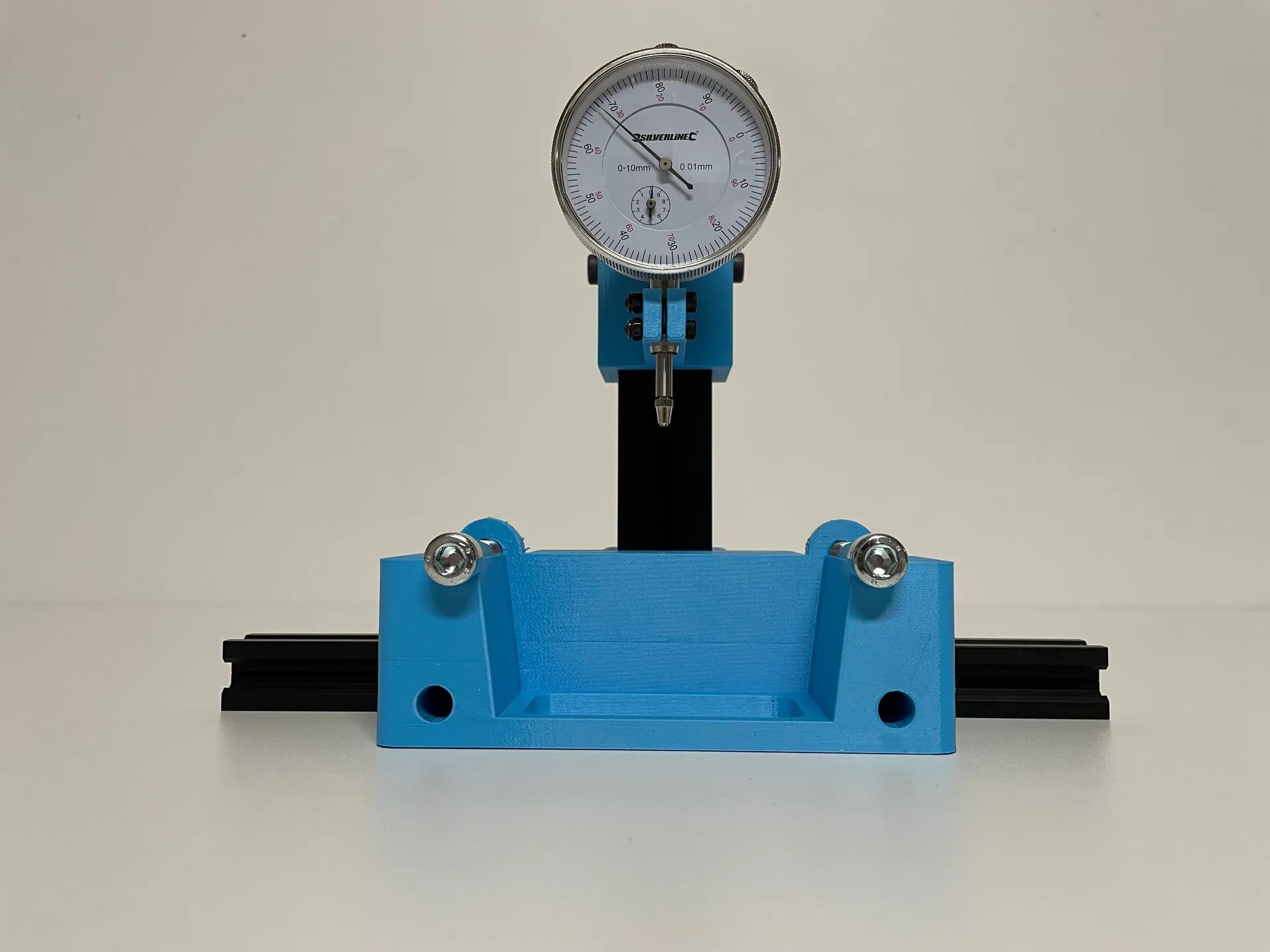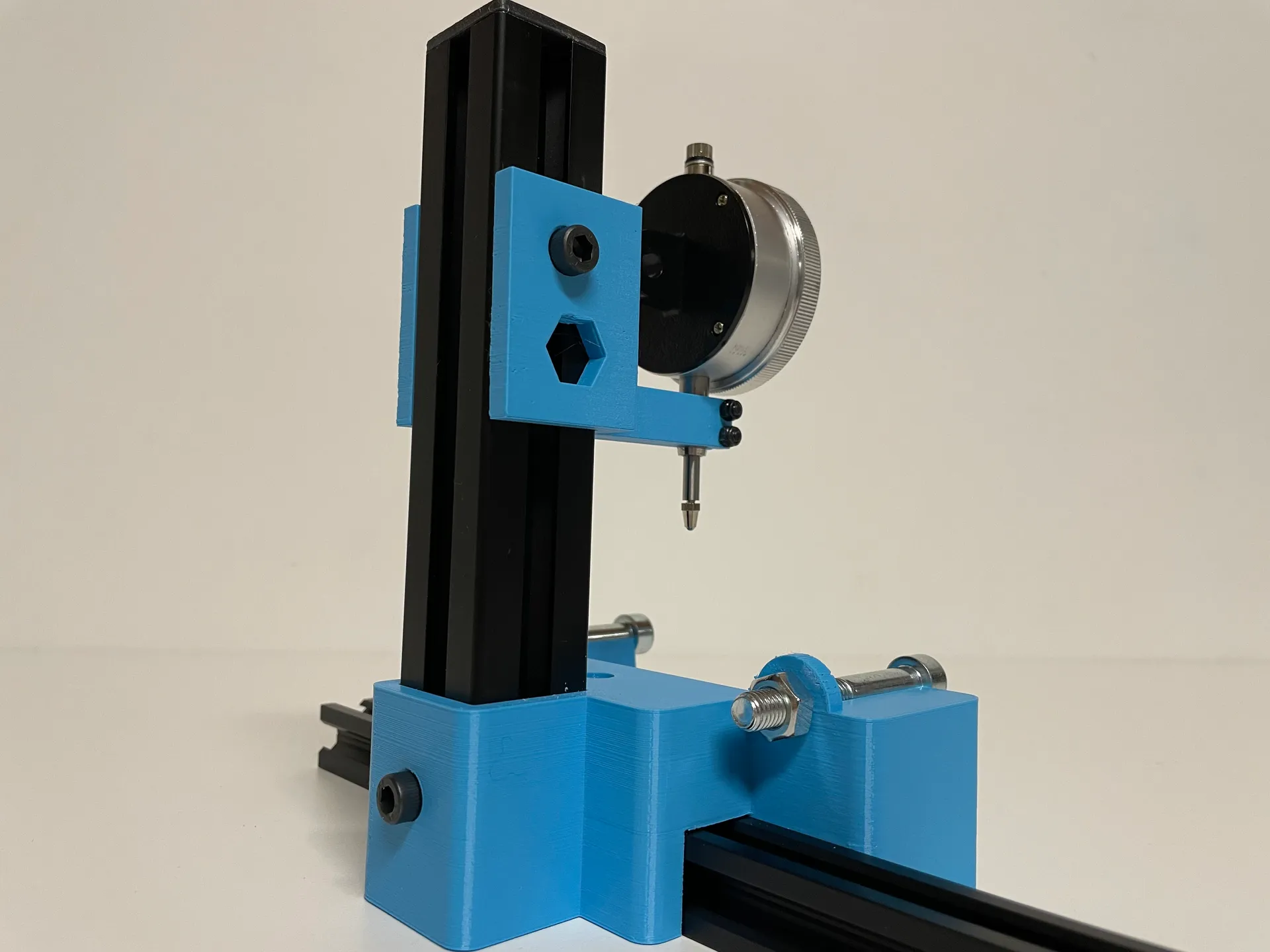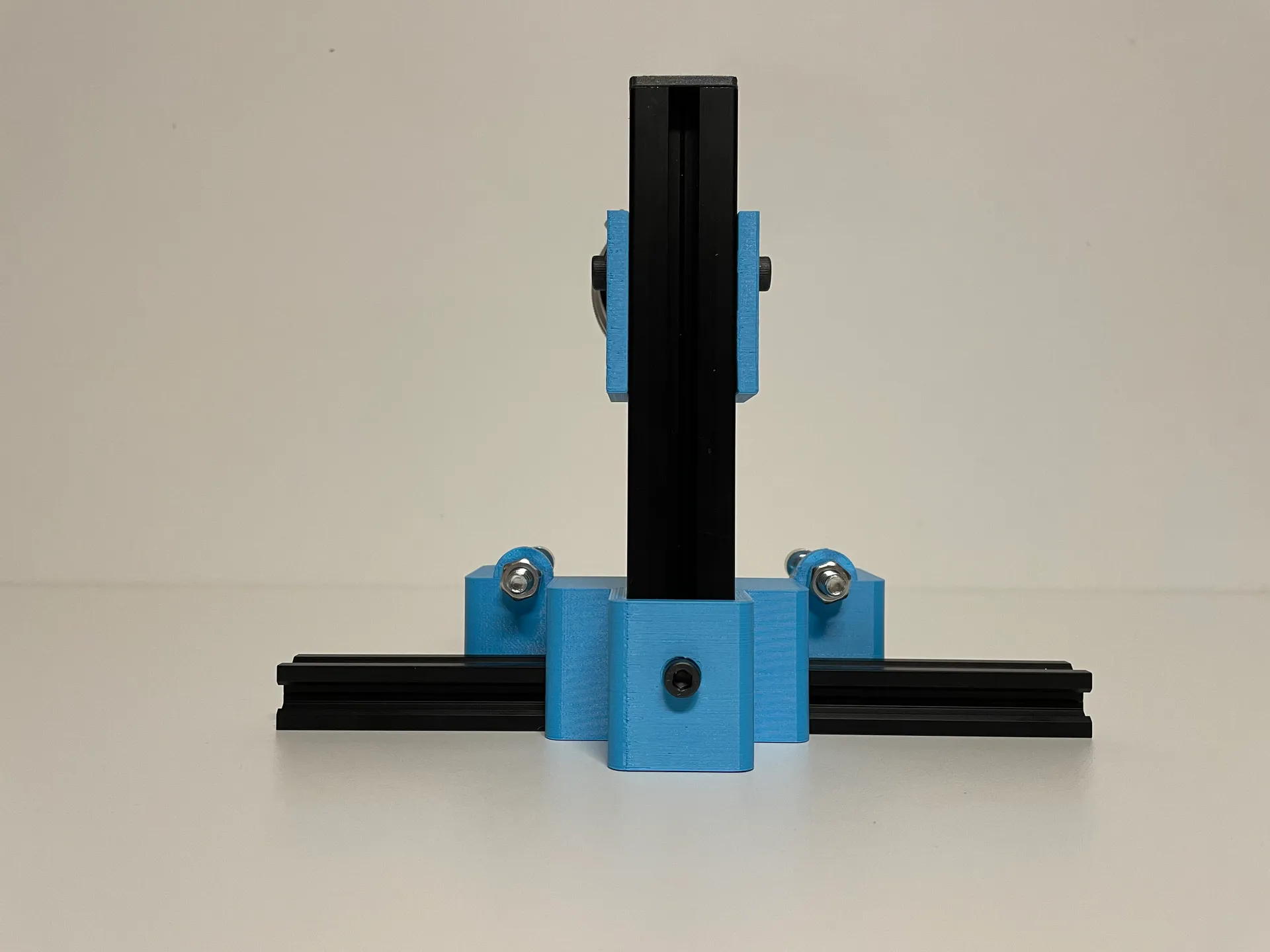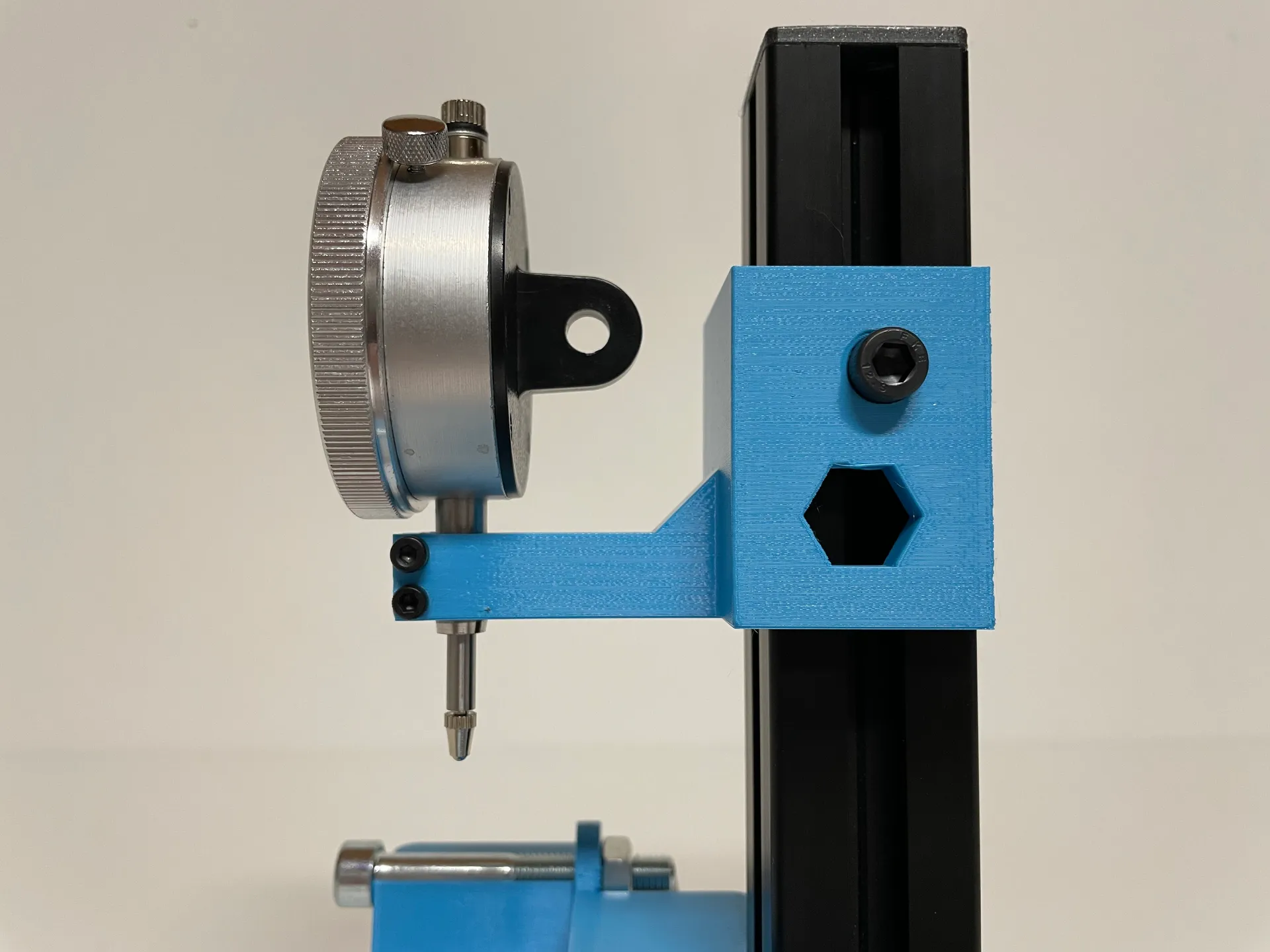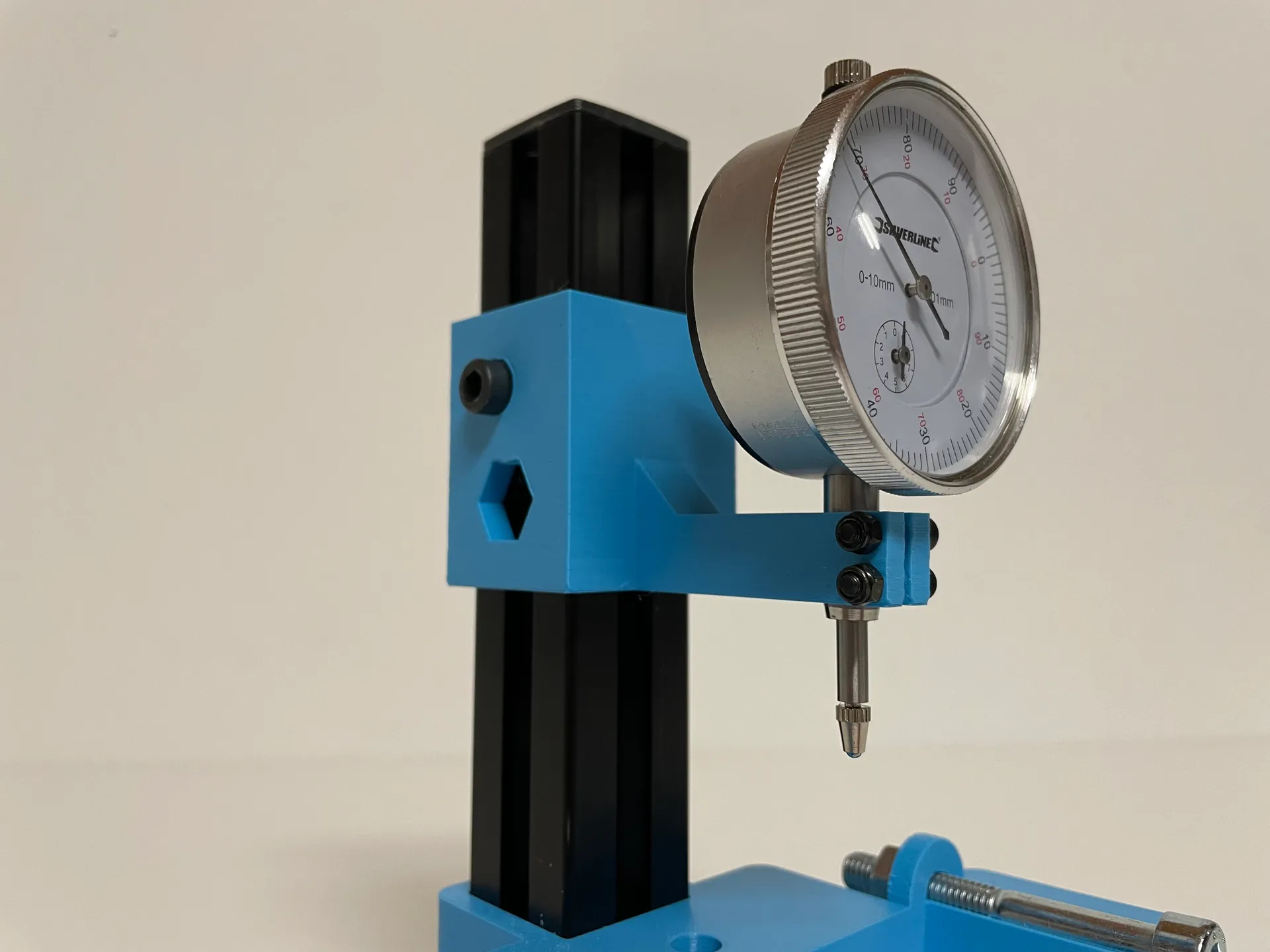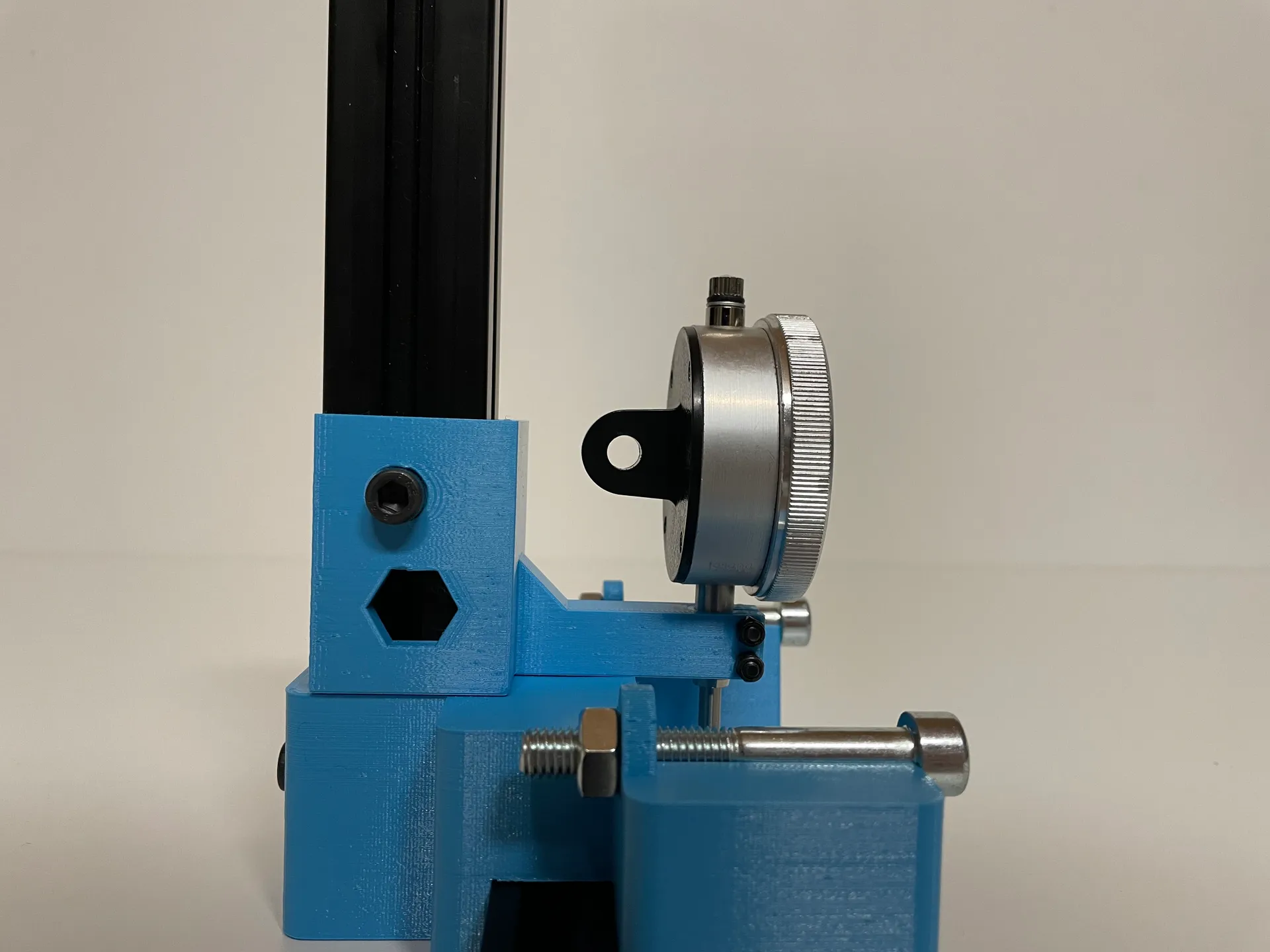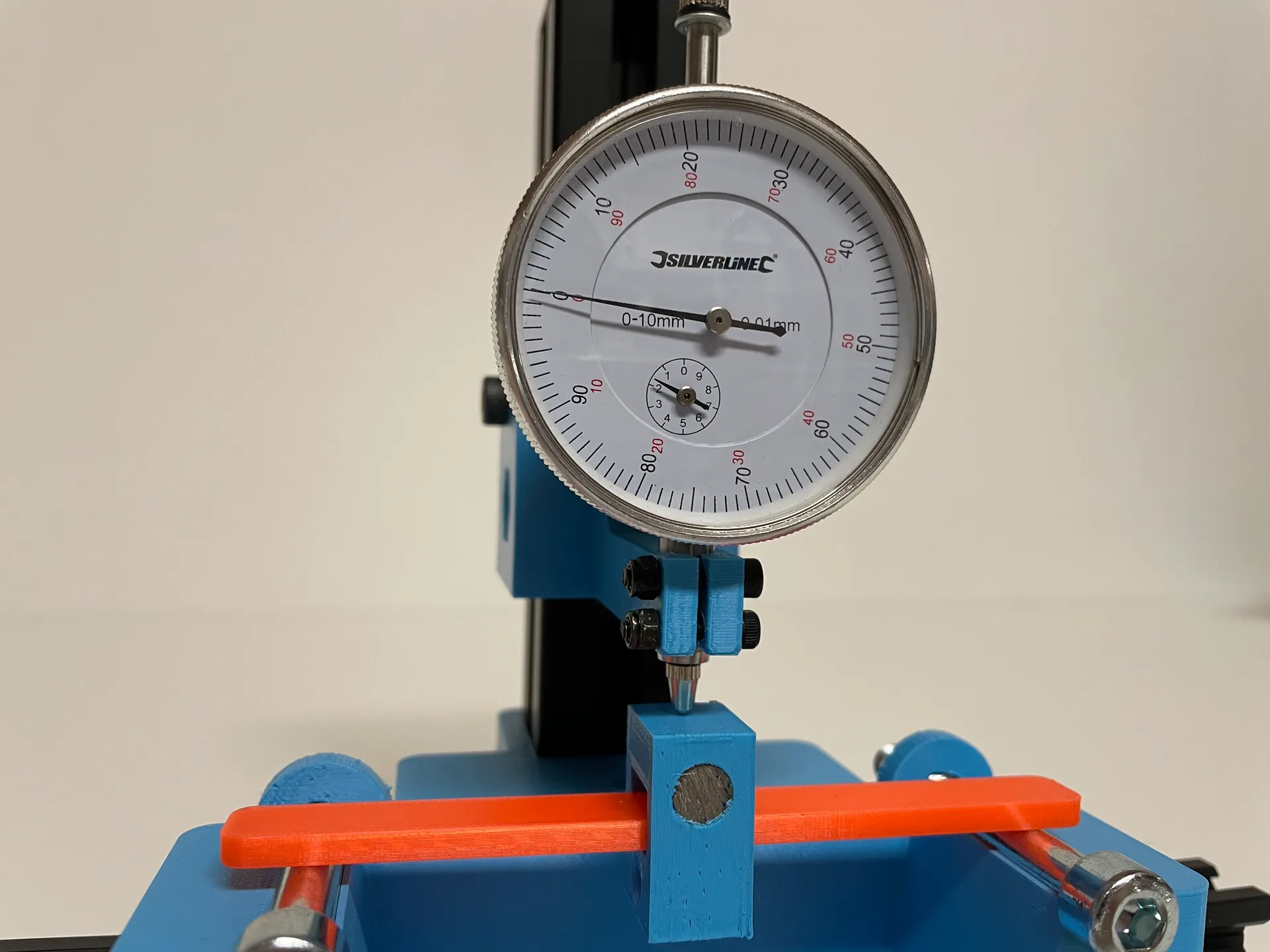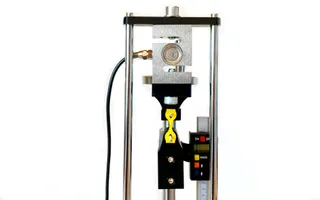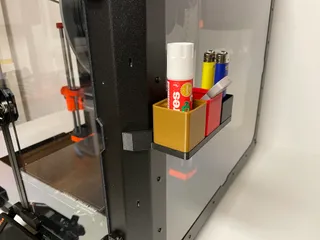3-Point Bending Test
Description
PDFIntroduction
If you have ever seen a video from CNC Kitchen or are interested in materials testing, you have probably heard of a 3-point bending test (see Wikipedia).
It can be used to analyse the stiffness of materials.
For this, a sample is placed between two points. If you now apply a force to the sample in the middle (i.e. at the third point), it deforms elastically. The goal is now to measure this bending as accurately as possible. For example: how far does a sample made of PETG bend with a force of 12 N?
With this design, the force can be applied to the specimen by attaching weights or pulling by hand. The deformation is measured by a precision dial indicator that can be adjusted in height on the 3030 T-Slot profile.
Want to see it in action?
Check out one of my videos:
BOM
In the following list you will find everything that is additionally required in terms of screws and profiles.
| Parts | Quantity |
| Cap Head Screws | |
| M3 x 16 mm | 2 |
| M5 x 20 mm | 3 |
| M6 x 12 mm | 3 |
| M8 x 50 mm | 2 |
| (T-) Nuts | |
| M3 self securing nut | 2 |
| M5 T-Nut for 2020 T-Slot | 3 |
| M6 T-Nut for 3030 T-Slot | 3 |
| M8 nut | 2 |
| Aluminium profiles | |
| 2020 T-Slot 250 mm (can also be longer) | 1 |
| 3030 T-Slot 160 mm (min 100 mm) | 1 |
| Others | |
| 8 mm thick rod x 18 mm | 1 |
| Optional | |
| 2020 Endcap | 2 |
| 3030 Endcap | 1 |
A precision dial indicator and weights are also needed. For the weights, a bucket and beverage cans, sand, etc. can be used.
Assembly
- Print the parts “base.stl”, “dial-Indicator-holder.stl” and “sample-hook.stl”
- Slide the 2020 profile into the lower opening and the 3030 into the upper holder
- Add matching T-nuts to the locations of the holes
- Fasten the 2020 profile with three M5 x 20 mm screws
- Fasten the 3030 profile with an M6 x 12 mm screw
- Screw the two M8 x 50 mm screws into the base and secure them at the end with two M8 nuts
- Slide the dial indicator into the holder and tighten it with the two M3 x 16 mm screws and self-locking nuts. Make sure that the gauge is firmly in place. Do not overtighten them!
- Slide the holder into the 3030 profile with two M6 x 12 mm screws and T-nuts and tighten the screws lightly
- (Optional) Add end caps to the ends of the profiles
- Press the 16 mm piece of the 8 mm shaft into the sample hook
- Done!
Printing the samples
Use 15 Perimeters.
Running a test
To be continued soon
Tags
Model origin
The author marked this model as their own original creation.
